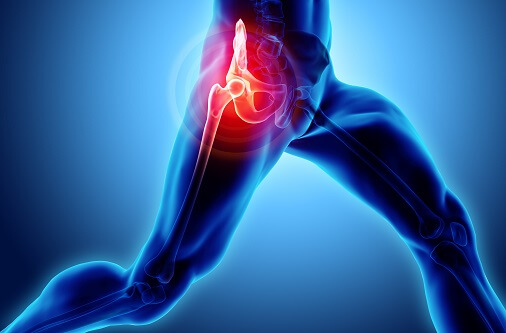Piriformis syndrome is a fairly common disorder that is a painful neuromuscular condition. Pain, numbness and tingling usually occur in the hip and buttock, and can extend down the leg. It develops from either sciatic nerve irritation or compression. Piriformis syndrome is often misdiagnosed as sciatica.
The piriformis muscle located in the buttocks. It runs from the lowermost vertebrae to the upper part of the femur. It is the muscle that helps rotate the hip and turn the leg.
Piriformis Syndrome Symptoms
The typical symptoms are comparative to the symptoms that come along with sciatica. Patients usually complain of severe, sharp, radiating pain. The pain is located in either the lower back or buttock and radiates down the leg. The pain can often be felt in the thigh, calf, and foot.
Other Symptoms include:
- Muscle spasms
- Trouble sitting for long periods of time
- Pain in the muscle during a rectal exam
- Ache in the buttock
- Pain when climbing stairs

Risk Factors
People who sit for long periods or are involved in frequent lower-body workouts are at a higher risk of developing piriformis syndrome.
Piriformis Syndrome Treatment
Often times, pain relievers, muscle relaxants, and anti-inflammatory drugs are used in the treatment of piriformis syndrome. Physical therapy, stretching and exercise also help relieve existing pain. In some cases, you may be able to get rid of the pain permanently.
Doing stretches and exercises can help to strengthen the muscle. It will also reduce muscle spasms and relieve muscle tension.
- Stretching – Stretching can help release muscle spasms and pressure on the sciatic nerve.
- 90/90 Stretch
- Frog Stretch
- Butterfly Stretch
- Piriformis Stretch
- Outer Hip Stretch
- Long Adductor Stretch
- Short Adductor Muscle Stretch
- PNF/Muscle Energy Technique
- Piriformis Syndrome Exercises
- Foam Roller Exercises
- Clams
- Toe Touch Drill
- Resistance Band
Causes of piriformis syndrome
The piriformis muscle is used every day. Any time you walk, shift your weight or turn your lower body it is in use. It can be injured by using it too much or not enough.
Not all causes of piriformis can be determined. Some common causes include:
- Abnormal development
- Abnormal spine issues
- Injury
- Legs are different lengths
- Sitting for long lengths of time
- Vigorous exercise
- Previous hip surgery
- Problems with feet
- Running
- Heavy lifting
- Twisting
- Falls
- Sport related injuries
Preventing Piriformis Pain
It is believed that most piriformis pain is caused by repetitive motion. To prevent pain, practice the above mentioned stretches and exercises. You should also:
- Wear comfortable shoes
- Practice good posture
- Warmup before exercising
- Treat any injuries right away
- Don’t perform exercises that cause pain
- Don’t exercise when you have an injury
Take Action Now
If you are dealing with pain brought on by piriformis syndrome, we can help you treat it. Don’t live your life in agony. Come see one of our Accredited Exercise Physiologists.
We have 9 locations throughout Sydney.
At Sydney Sports and Exercise Physiology, our exercise physiologists will provide you with a personalised program based on your assessment. The quicker you start dealing with the piriformis syndrome pain, the faster you can get rid of it.
